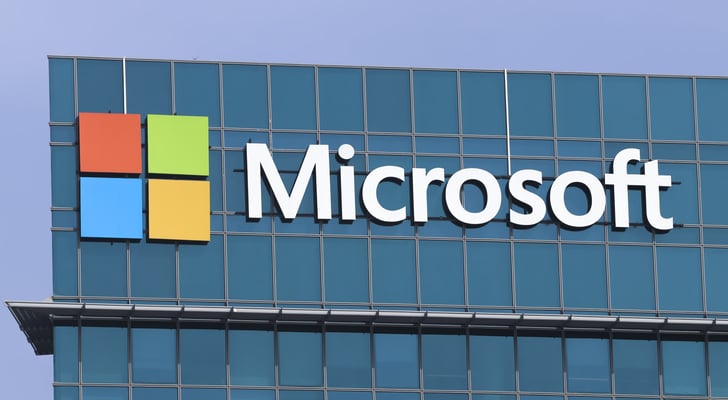To most consumers as well as most investors, the news would have meant very little. Software giant Microsoft (NASDAQ:MSFT) is joining the Open Invention Network (OIN), allowing free use of more than 60,000 patents for developers that code apps and programs for the open source operating system called Linux. But, in that relatively few people are familiar with Linux and its nuances, current and prospective owners of Microsoft stock were unsure why it mattered.
However, it’s a far bigger deal than it may seem on the surface — even if it’s still not entirely clear how — as it marks a radical evolution not just for Microsoft, but for the entire computing arena.
No Longer a ‘Cancer’
For perspective, Linux is the same operating system former Microsoft chief Steve Ballmer called a “cancer” back in 2001. Now the company is earnestly supporting its expansion. What a difference a few years can make.
But what is Linux? It’s an operating system, not unlike Windows, but not like it either. There are consumer-facing versions of it, though it has been a highly appreciated option within the tech-development world where flexibility and customization are crucial.
That’s where the term “open source” comes in. Not only is open source software free of charge (though not all custom-written tools and apps are), its underlying code is readily evident so programmers can see and tweak things for themselves. Microsoft’s Windows and iOS from Apple (NASDAQ:AAPL) weren’t and aren’t exactly developer-friendly.
By joining the OIN, Microsoft not only acquiesces to an idea it resisted for years, but encourages free and open use of intellectual property that could seemingly crimp its top and bottom lines. Other Open Invention Network members, including powerhouses like International Business Machines (NYSE:IBM) and Alphabet (NASDAQ:GOOG, NASDAQ:
GOOGL) can now use Microsoft’s patented technologies regarding Linux without fear of legal retribution.
The $64,000 question is, why?
Smart Decision
There’s more than one plausible answer, but in the most basic sense, Corporate Vice President and Deputy General Counsel Erich Andersen’s explanation held water. He said the decision is “the next logical step for a company that is listening to customers and developers and is firmly committed to Linux and other open source programs.” Anderson added,”developers do not want a binary choice between Windows vs. Linux, or .NET vs Java – they want cloud platforms to support all technologies. They want to deploy technologies at the edge — on any device — that meet customer needs. We also learned that collaborative development through the open source process can accelerate innovation.”
Translation: There’s money to be made by rethinking this sliver of the company’s business model.
That said, there may be a less generous and less altruistic motivation as well. Abhishek Prakash, programmer and self-proclaimed Linux fan, wrote of the decision, “Microsoft has its own selfish interest in this case. This time around it is more about protecting Microsoft and its cloud business on Azure that depends heavily on Linux. Remember Oracle vs Google legal battle over the use of Java in the Android operating system? If Linux ever gets into patent battle and loses it, all the companies using Linux might have to pay billions. Microsoft surely doesn’t want to be in such a situation and hence it (along with many other big corporations) wants to protect Linux in order to save its own back.”
A great deal of Microsoft’s relatively new cloud computing business is already built on a Linux-based foundation.
Bottom Line for Microsoft Stock
While clearly developer-friendly, it’s a maneuver that understandably has raised the eyebrows of Microsoft stock holders. Why give away what could be sold? Microsoft has already collected several billion dollars’ worth of patent royalties related to the Android smartphone operating system (which is a Linux-based system) that will now, presumably, no longer command revenue.
A great number of smaller royalty revenue streams may also be going away.
Microsoft CEO Satya Nadella isn’t dumb though. He sees the tidal shift underway in the world of computing. Defensible walls and isolated computing environments are no longer the norm. Operating systems are no longer a key profit center in and of themselves. Partnerships and co-development are the norm, and operating systems are a means to creating other revenue streams. In Microsoft’s case, it has a chance to make even more money by allowing its Azure cloud computing platform to become even more user friendly.
Again, it’s still not clear exactly what sort of fiscal impact the new-found support of Linux will make … perhaps not even to Microsoft. It was the inevitable shape of things to come though. Better for the company to pull the trigger now, on its terms, and help shape what the OIN is than be forced to join the OIN on someone else’s terms at a later date.
As of this writing, James Brumley did not hold a position in any of the aforementioned securities. You can follow him on Twitter, at @jbrumley.

